Have you seen that Pixar movie, The Incredibles? It’s one of Tom’s and my favorite animated movies. Anyway, it’s a story about a family of superheroes. At one point, the dad superhero gets a tear in his supersuit. He goes to the fashion designer, Edna Mode, who made his original suit to convince her to mend it. She determines he needs a new supersuit and Mr. Incredible suggests that a cape would be really cool. But Edna refuses and proceeds to relate all the way capes have been the tragic downfall of deceased superheroes: sucked into jet engine, snagged on liftoff, smothered in sleep, and so on.
“No capes!” Edna says.
That’s the way I feel about creating flowers with fabric collage.
When a student sends me a picture of a rose or poppy to be made in class, it’s a struggle to resist the urge to reply: “No flowers!”
Flowers seem like such appropriate subjects for my fabric collage: they come in every color imaginable and are gracefully shaped. Flowers are beautiful!
I, too, thought that way once… When I was young and naive… [Succumbs to wave of nostalgia].
I still think flowers are beautiful. They are wonderful subjects for my photography. I have thousands of flower photos on my computer. And that’s probably where they’ll stay.
I speak from experience. I have made fabric collage flower quilts. A few. I’m quick on the uptake. It didn’t take me long to learn my lesson. (Please note: as you’ll read later in this post, this is my very personal take on using flower imagery in the way I work with fabric collage. Other fabric artists create with flower designs all the time—and I totally love and appreciate what they do and how they do it!)
Here’s a sunflower I made as part of a round robin group project when I was part of an art quilting group in Portsmouth, NH. We called ourselves The Renegades. The constructed flowers on the sides are by my friend Lisa Grey.
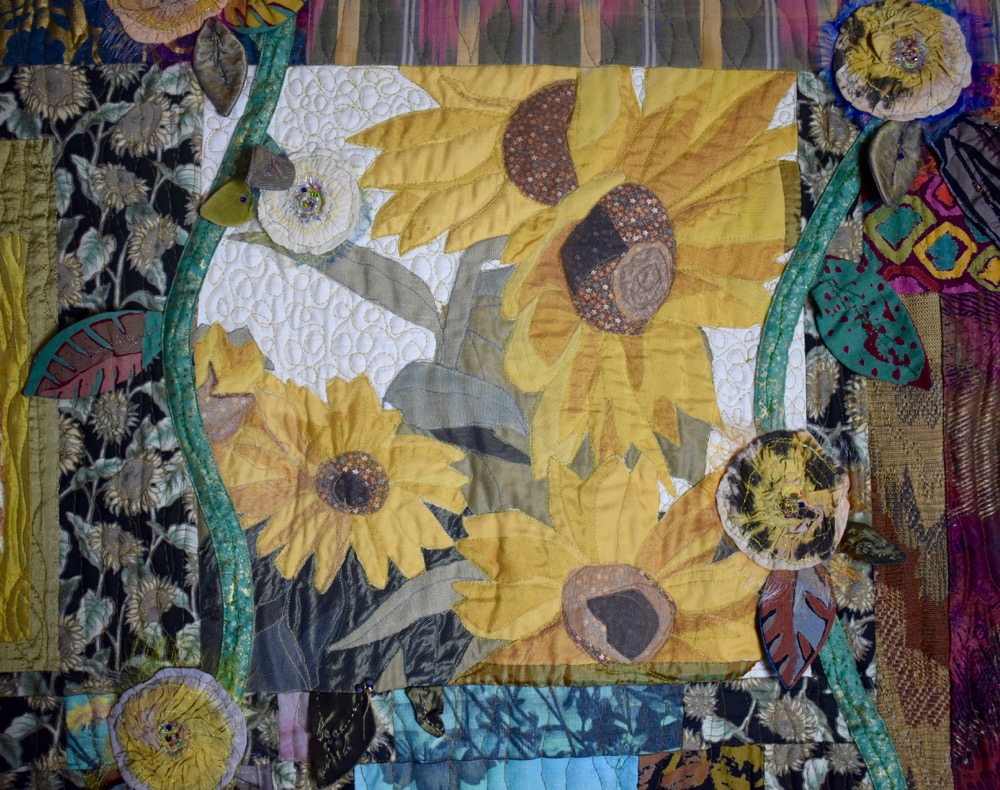
Here are pair of quilts I also made early in my career. I remember it well. The year was 1994. I was looking for new subject matter to use for creating small quilts to sell. I had started making small “trophy” fish and thought flowers would be a good subject as well. At a show that year, I had four small fish quilts and these two florals. A year later I counted over a hundred fish completed, and the two flowers. So I moved on.
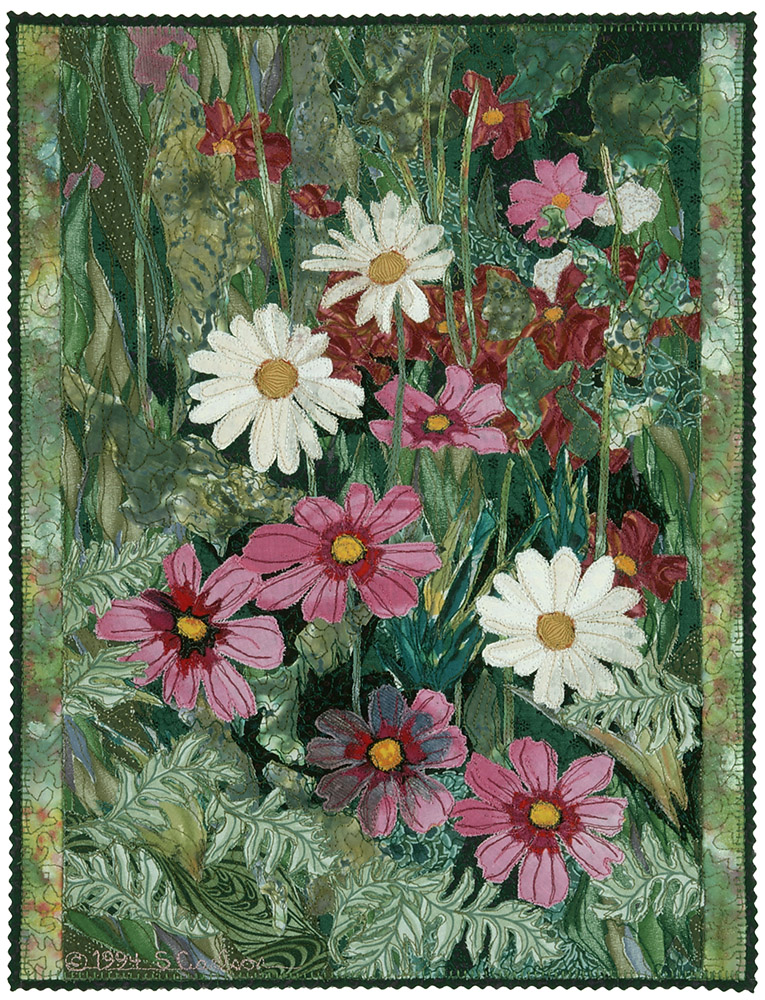
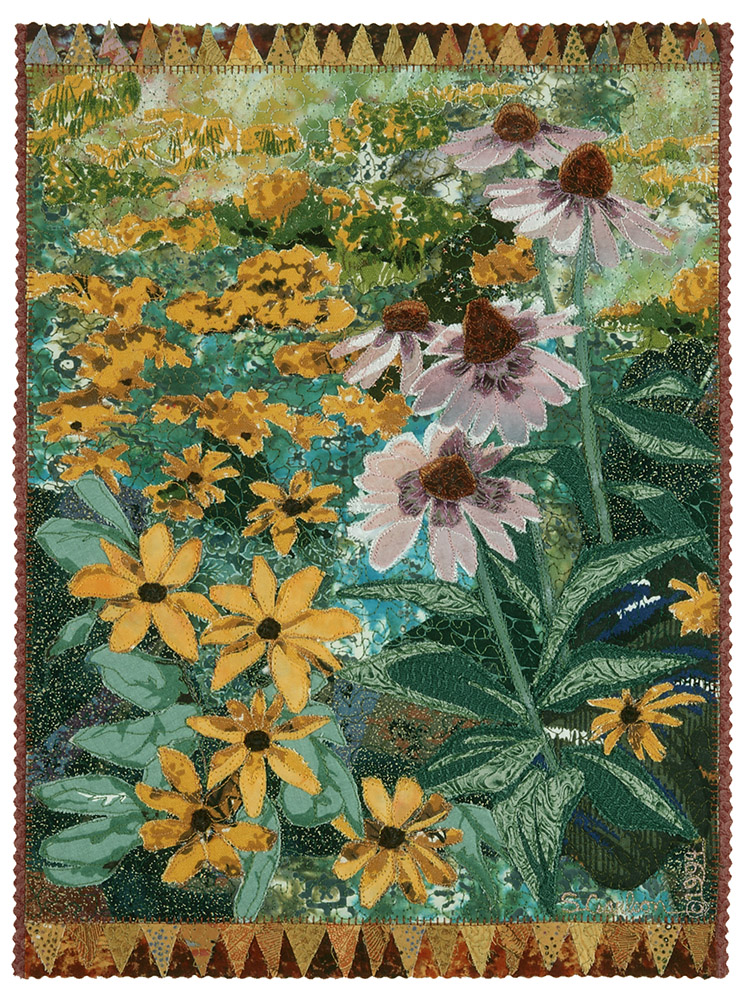
I found flowers to be a trifle, mmm, tedious. Creating petal after petal, leaf after leaf, was a bit, well, repetitive.
Even though I had learned my lesson, I did return to flowers one other time. No one had a gun to my head, but it was unavoidable.
A couple years later, I did some flowers as part of a four-piece series, Farmer’s Market, where each panel represented a different aspect of the Portsmouth (NH) farmer’s market.
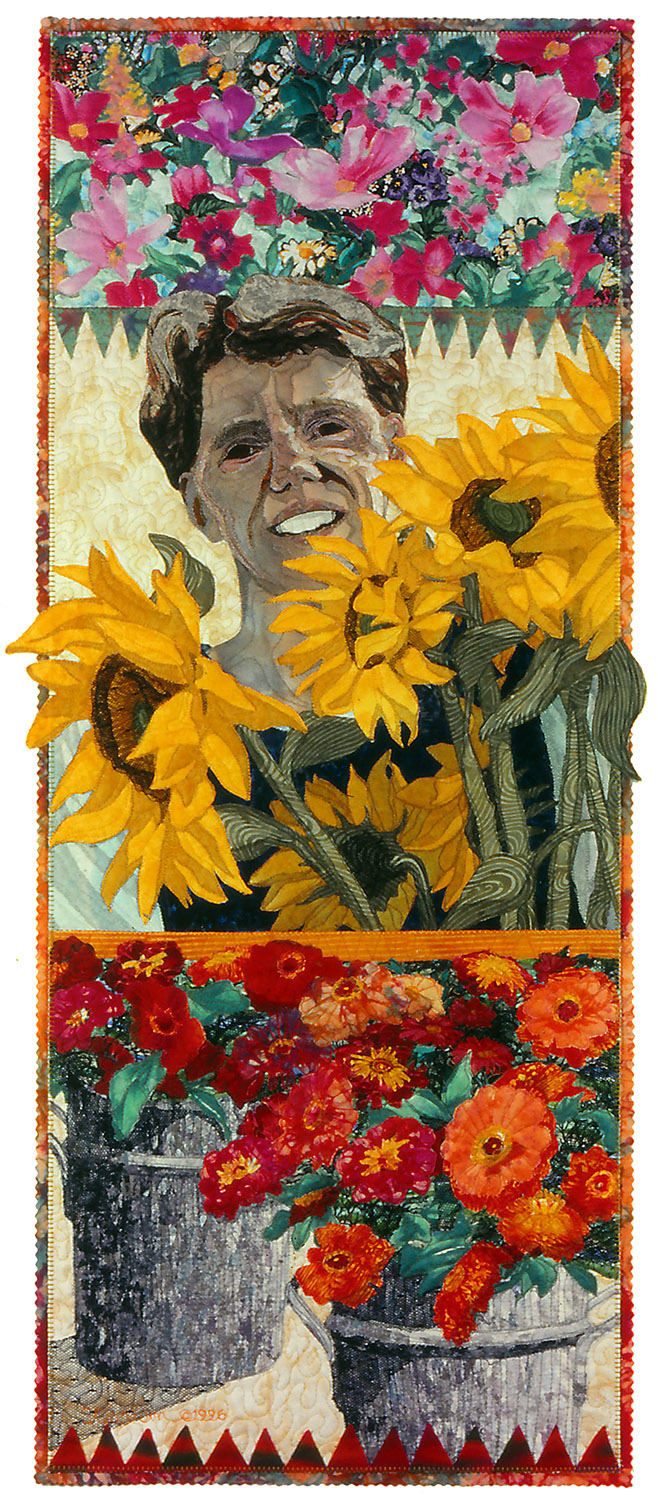
I may not cry “No flowers!” when students want to do them in class, however I do gently try to dissuade them. Here’s what I say:
You might think doing a flower is an easy alternative to, say, a face, or an animal. But that isn’t the case. To do a flower well, there are as many nuances to a petal as to a person’s cheek. There’s shadows, highlights, curves, nicks and turns to edges of petals. Instead of doing one cheek, you’re doing ten or fifteen petals, again, and again, and again.
Look at the sunflower in the Farmer’s Market piece, each petal, each leaf, each stem has to be shaded just so in order to give the sense of form. For a cheek or a nose, you do that once and you’re done.
I didn’t used to warn students. I just helped them with whatever they wanted to do. But one time a student did a field of flowers. It was a landscape, and needed to be realistic. Pretty sure I said it would be more difficult than she might think. She went ahead and did it anyway, getting it started in class, and a few years later she was in another class.
“Do you remember that flower field?” she asked. “I finished it. But you were right. I wish I had done something different. I would have had a lot more fun.”
It was after that I started warning people that they might be happier with something other than a flower. I feel it’s my job to share my experience with them, and then they can do with it what they want. I’ll still help them do a flower and more often than not those that do continue do very well. At least after my warning they know what they’re getting into. They’ve acknowledged that the flowers are something important to them. They have a vision for it and they do the work. And they don’t complain because I’ve already warned them.
Here are some of my students who persevered and created beautiful floral collages, despite my warning (most photos are in-progress shots).
Linda Cooper, Northern Virginia, June 2016
Lanette Cuffe, Kalispell, MT, July 2016
Betsy Munroe, Woodland Ridge Retreat, April 2017
Janet Pittman, Woodland Ridge Retreat, November 2017
Mimie Pollard, Woodland Ridge Retreat, November 2017
Jean Savalchak, Portland Maine Retreat, October 2017
Ellen Stevens, Portland Maine Retreat, May 2017
Mary Lou Weidman, Empty Spools, March 2016
Lucy Lowry, Alegre Quilt Retreat, April 2018
For as much as I avoid flowers as subjects for fabric collage, I love the directions these students took them. They had tenacity and it paid off. So, of course you can create flower collages. The question is, Do you really want to? I mean REALLY want to? ‘Cause if you do, go for it. If you’re committed to it, that will help you persevere through to that ten zillionth petal.
Now, if you’ll excuse me, I need to go outside and plant some flowers. I love flowers. They’re perfect as subjects in my window boxes.
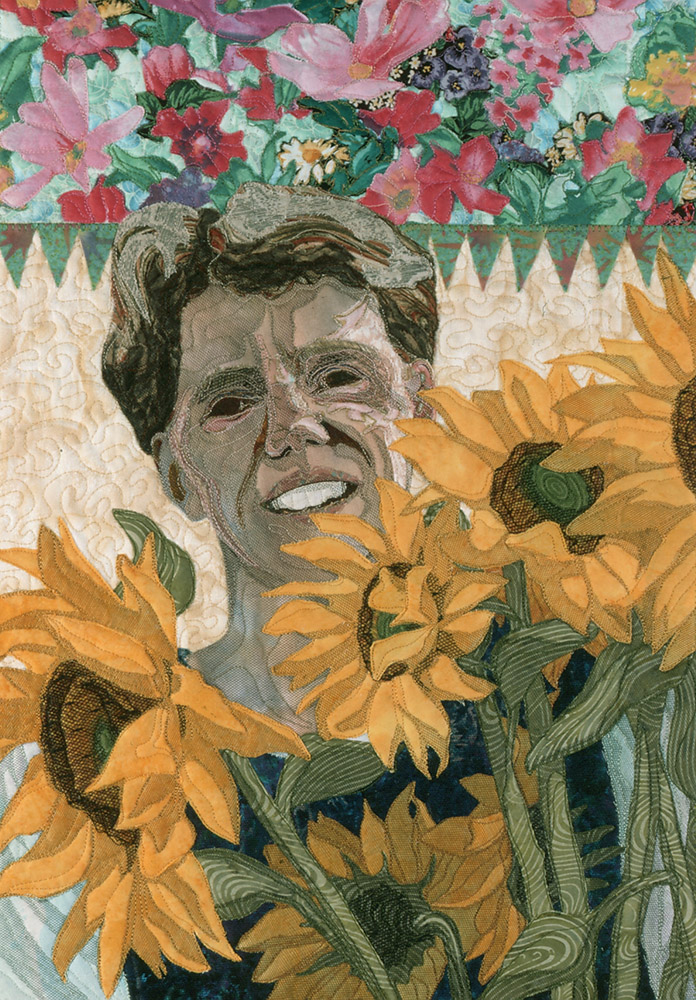











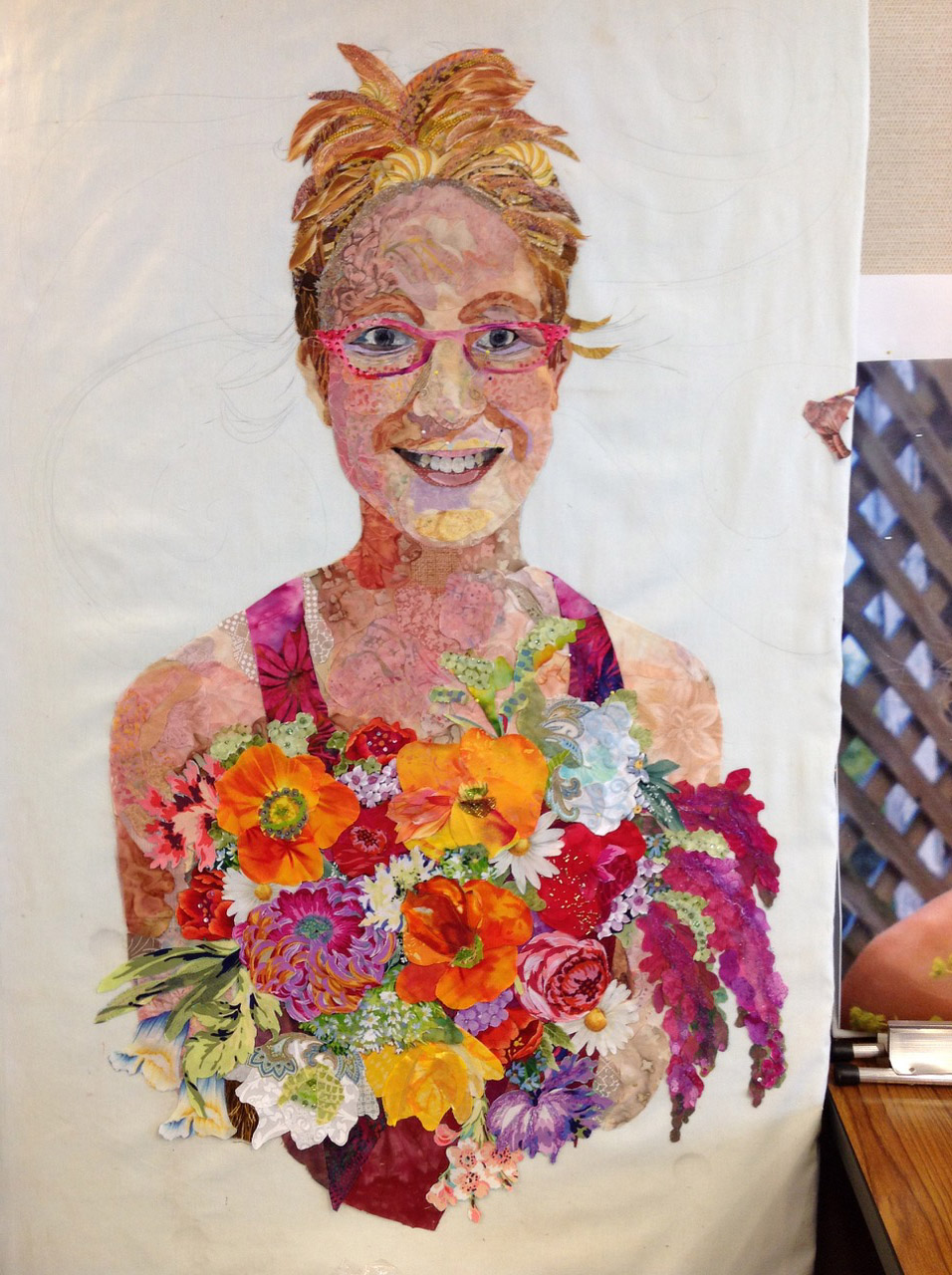




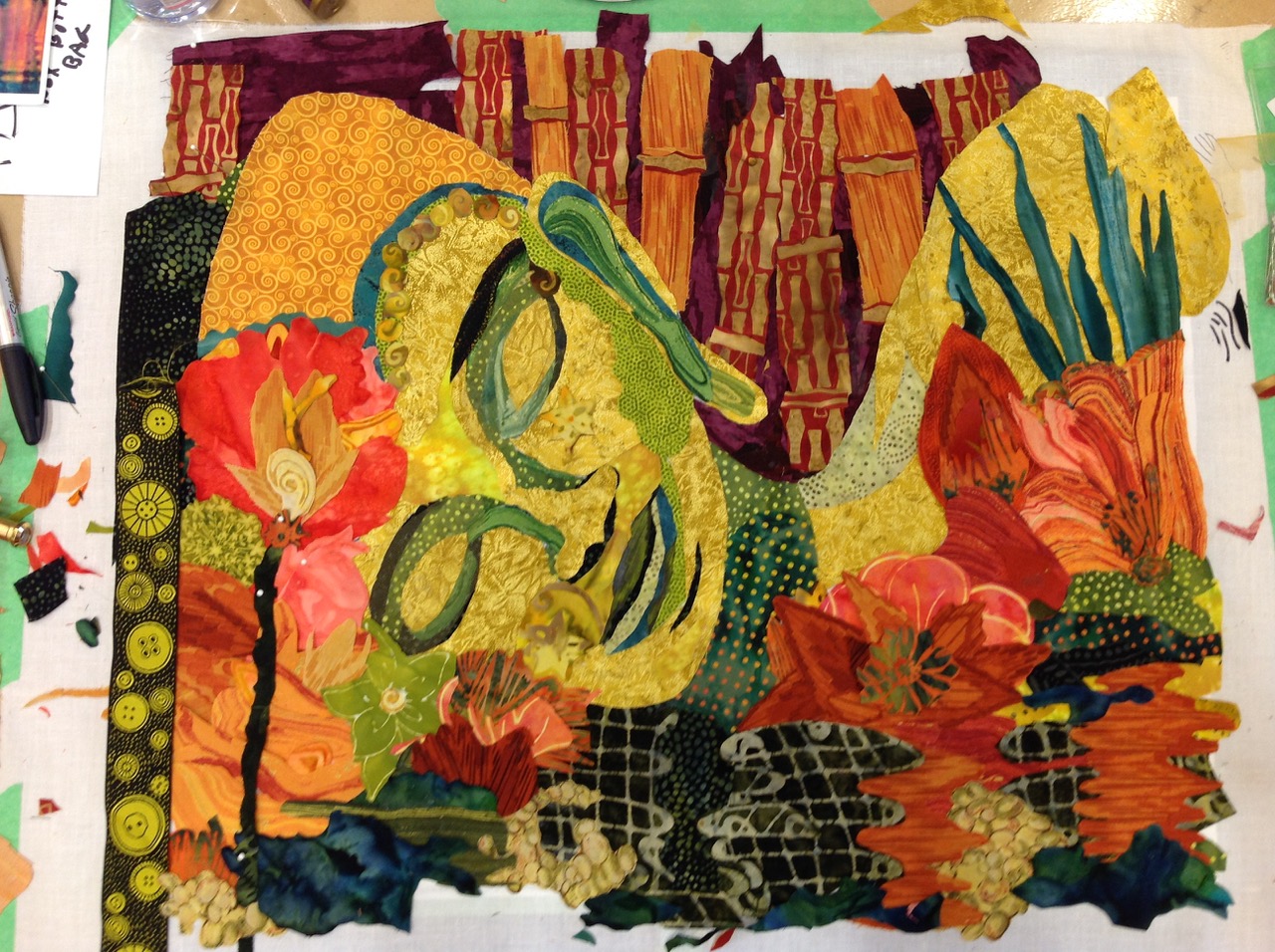
Wow! This is my favorite post ever. You have articulated why I love making flower quilts! Capturing the nuances, deciding where I can argument realism with fantasy, getting the mood just right… all of it. I’ve always wondered how I can be so incredibly engaged and enchanted as I hike for miles, focused on the edge of the trail. The forest floor can be repititious and I am entranced with the details. I love the flower quilts on this post. I wish there were more! The faces, yep, I admire the artistry and cool technique but No connection. They’re all “some one else.†But the flowers! Flowers belong to everyone. Pretty cool that we all have passions and can create in fabric for others to see.
Interesting and amusing post. IMHO, your collage technique works wonderfully to depict texture and movement — fur, scales, etc. To me, flowers are kind of static, with small details that seem difficult to collage. However, the pieces you showed were successful, so I guess the moral of the story is, as always, different strokes for different folks 🙂
Then there are Georgia O’Keefe flowers…..
Susan, I agree with you. I have had the same experience with leaves. I do like using flower print batiks in my quilts, but mostly not to suggest flowers!
Very insightful blog, made me laugh several times. I too would never do a flower again, to repetitive and not as rewarding. However, as you said, many people have made beautiful flowers subjects. Just not my passion, give me an animal any day.
Leslie